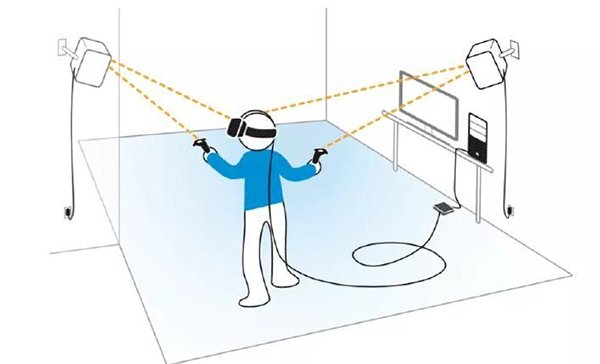Not long ago, HTC VIVE finally announced the conditions to open the lighthouse location tracking technology program, although the official repeated interpretation is not "open source" but "open", but still many long-awaited partners have hope. In 2016, the VR market is still at a technologically advanced stage. In addition to lighthouse's tracking technology solutions, the gradual maturity of different space positioning technology solutions has brought ordinary users closer to the "gold line" of "immersiveness." Only with good quality and low price can we enter the homes of ordinary people. The core indicators here are still tracking technologies.

The sense of immersiveness means that you have to enter the drama. How to achieve? Location tracking and interaction is the threshold. Let's take a look at location tracking. We often see “6DOF†(degrees of freedom) location tracking system in media reports. What does this mean? In VR scenes, in order to locate the user's position and posture in virtual space, track The system needs to calculate the 3D coordinates and 3D orientation of the user in the real scene, so that the user can make different actions, such as moving and turning the head, the VR scene can also make corresponding changes.
Then, how to achieve the capture of this 6-DOF data. For example, Lighthouse uses an outside-in solution, that is, two cameras are set up externally to cooperate with sensors on the helmet. Another solution is just the opposite. It is an inside-out solution. It eliminates the need for external equipment and has a low cost. The camera is integrated directly into the headlights, and can be used in the living room at home. It is easy to carry and move. Through computer vision and image recognition algorithms, feature points in the external environment are identified, and 6-DOF tracking is achieved. The stability and effectiveness of this solution are compared with the test algorithm. Currently, companies such as HoloLens and uSens are in possession of this technology.
Let's talk about interaction. Bring a helmet, just addicted, it is already a rookie level VR era, and in the virtual world to achieve the same natural interaction in real life, in order to release the true value of VR. Oculus, HTC vive, PSVR, all use the peripherals such as the handle, its precision is high, the accuracy is high, now through the way of the backpack host computer, solved the problem of the line to a certain extent, but with the author's experience, the weight, Fever and endurance have yet to be optimized. The most important thing is the handle and other peripheral controls. There is always a kind of "jump play" feeling. If you are not familiar with the use of the handle, you must have a personal trainer on site. Is there a simpler way of interaction? Gestures, eyeballs, brainwaves...? These types of interactions use the “remote control†that people bring with them. For these three types of gestures, gestures are relatively reliable.
There are also many ways to “strip the onions†and interact with gestures. There are sensors with gloves. This kind of accuracy is high and can be used outdoors. The trouble is that everyone needs to be calibrated every time they use it. There is also a freehand in the air. Directly using your own hands, it is the same as it is in reality. It can be used. There are relatively high technical thresholds in this direction, so fewer companies are involved, such as the better performance of the leapmotion on the PC, and the uSens sense of the mobile on the card, which is in terms of mobility, minimal wear, cost, and consumption. There are many advantages in market potential, but the only concern in the industry is how effective the recognition is. Leap motion has already reached cooperation with the storm. It is understood that major manufacturers have had in-depth communication with the two companies. The market's expectation of gesture interaction is still quite high. The official announcement of uSens LingSense will be officially launched in China and the United States at the end of August. The Fingo SDK and supporting hardware modules will be officially released. This is their first official debut, and the effect will be waited. It will also open a door for VRAR to enter the era of interaction. .